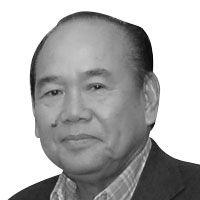Food self-sufficiency a must

The Department of Agriculture (DA), together with local government units, should play a more decisive role in rolling out urban farming technologies that will encourage and enhance food production while addressing a widening food security issue because of the pandemic.
Data on the Philippines, which already logged the highest number of people in Southeast Asia suffering from moderate to severe lack of consistent access to food before the pandemic, showed worsened numbers as the quarantines in Metro Manila and other cities dragged on for months.
More than 20 million Filipinos across the country now face acute hunger, a circumstance exacerbated by the destruction brought about by five typhoons that induced floods and landslides, destroyed property, and disrupted livelihoods.
The government has already stopped releasing funds to provide food rations to urban families affected by the lockdowns. This has forced many to find other sources of income, the most apparent manifested by the increased number of vendors on side streets selling just about anything.
PPP potential
The DA had launched its Plant, Plant, Plant program by giving away vegetable seeds in the early days of the quarantine to encourage people to plant for food, but without a clear program to ensure widespread adoption of urban farming, success has been limited.
PPP, if properly managed in residential enclaves where large clusters of urban poor can be found, could transform vacant lots into productive food plots manned by community cooperatives to yield a continuous supply of vegetables and other crops for household use, and perhaps also provide some source of income.
The role of local governments, specifically barangays, will be to pinpoint sites that can be tilled, and water supply that can be tapped to nourish the plants. On the other hand, the DA should be ready to provide the technical advice needed to turn the land – and space – into productive plots.
Local governments have increasingly availed of the free seeds given through the DA’s Bureau of Plant Industry, and give these to needy households. Most community recipients, however, have largely been guided by traditional farming knowhow in raising crops in a rural environment where land is abundant and conditions more favorable.
The urban setting presents multiple challenges. Available vacant land is limited, and thus requires meticulous space utilization planning to maximize farm production. New technologies include the adoption of vertical plots, and even hydroponics where water supply is challenged.
Holistic approach
Understandably, the DA has been busy the last few months prioritizing rice production and the distribution of funds and equipment made available through the Rice Tariffication Law (RTL) and its resultant liberalization of rice imports.
One of Agriculture Secretary William Dar’s most watched programs will indeed be how he can transform the country’s rice agriculture to become more productive, and more importantly, profitable for millions of small Filipino farmers.
Yet, as should be the embodiment of his “One DA Holistic Approach,” the mounting food insecurity in urban areas must be given ample attention. From the DA should come the expertise necessary for urban dwellers to learn how to effectively manage small-lot vegetable farms.
As an initial step, the DA could utilize online instructional materials that target users may use in cities where Internet access is more available and reliable. This is recognizing that DA’s army of agricultural technicians may be limited, and currently more focused on the rice growing areas in Central Luzon and Mindanao.
Similarly, the DA may form partnerships with non-government institutions that have the inclination to support poverty alleviation by reaching out to urban poor communities that will need assistance in tapping urban farming knowledge as well as cooperative organizing.
Food self-sufficiency
Much is to be desired in terms of modernizing Philippine agriculture. This does not just refer to the utilization of productivity-enhancing equipment, but also knowledge in land management, irrigation, use of organic fertilizers and pesticides, and climate reading.
The DAR vision under its current leadership should be able to stem losses in agricultural productivity resulting from decades of neglect, bring back life in our farms, provide a decent means of living for our farmers and fisher folks, and improve its contribution to the overall economic productivity.
As with other sectors of the economy during this pandemic, digitalization and digital knowledge should play a bigger role if utilized effectively. There’s so much that needs to be done and learned to maximize the use of our land and water resources.
The pandemic, plus worsening climate conditions, have taught us how fragile our economy is, and how unprepared our domestic food production capability is to handle disruptions in food supply. We may not be able to immediately rise to full self-sufficiency in rice, but we can aim for it in the medium-term.
This holds true for other agricultural produce. The scourge of veterinary pestilence like the recent African swine fever should be a valuable lesson on how anti-contamination measures coupled with better livestock management can prevent undue pressure on supply and prices.
Food self-sufficiency for a nation that has one of the biggest populations in Southeast Asia should be part of the new normal. This pandemic caused by the novel coronavirus is not yet over, and we are already hearing warnings of possible new ones coming.
Now that we’ve experienced how deadly pandemics can affect our lives, we should better prepare by acting now.
Facebook and Twitter
We are actively using two social networking websites to reach out more often and even interact with and engage our readers, friends and colleagues in the various areas of interest that I tackle in my column. Please like us on www.facebook.com/ReyGamboa and follow us on www.twitter.com/ReyGamboa.
Should you wish to share any insights, write me at Link Edge, 25th Floor, 139 Corporate Center, Valero Street, Salcedo Village, 1227 Makati City. Or e-mail me at [email protected]. For a compilation of previous articles, visit www.BizlinksPhilippines.net.
- Latest
- Trending





























